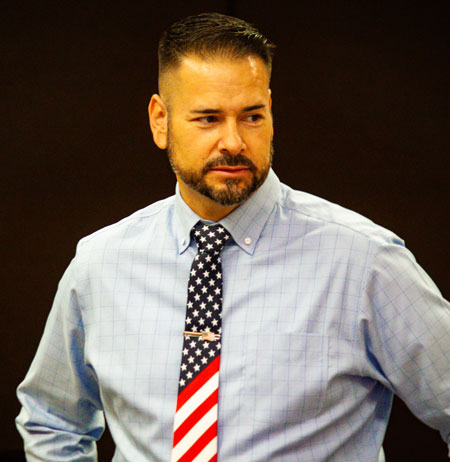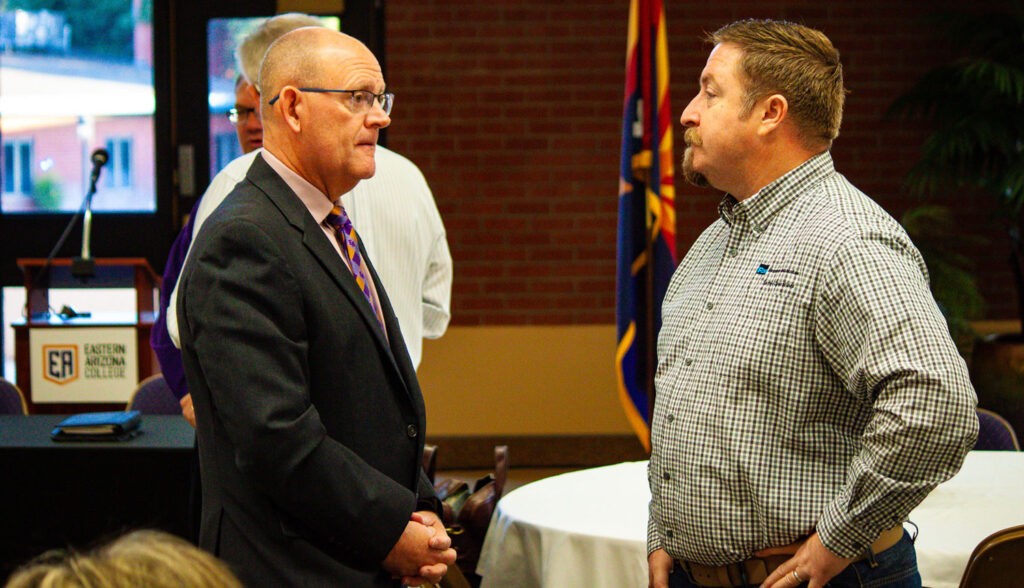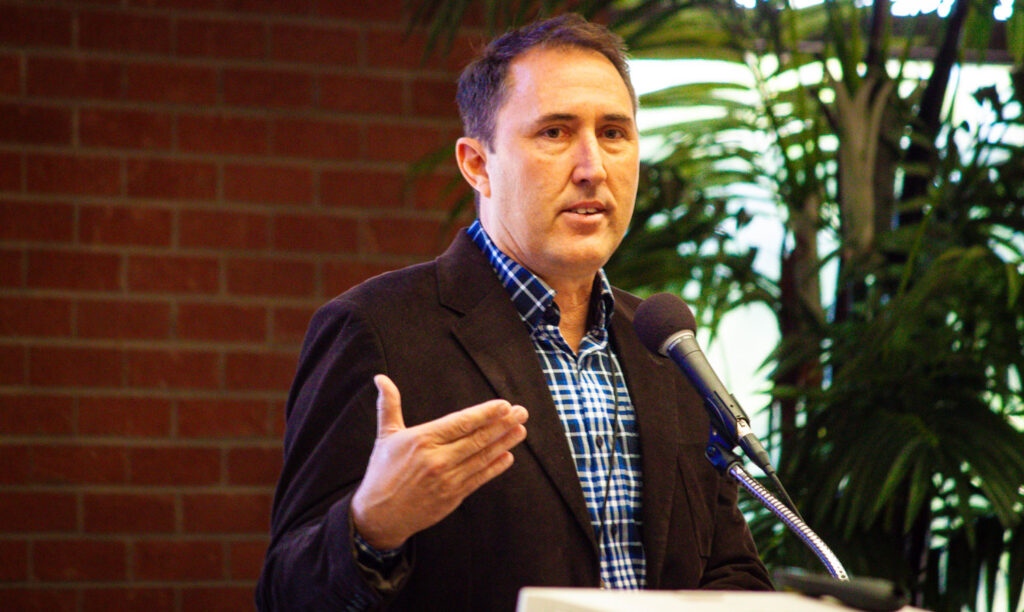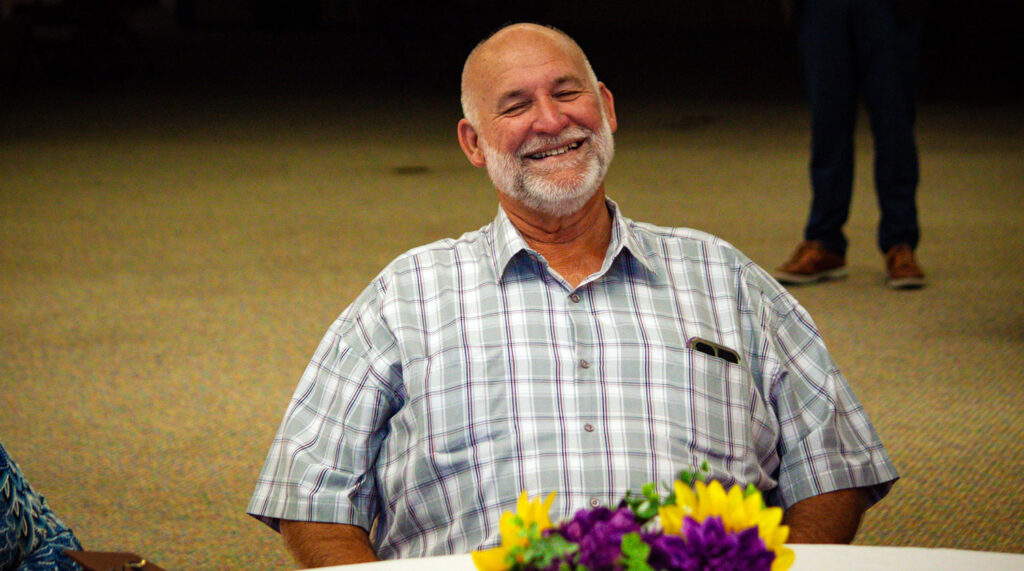The public was informed of the college’s possible plight regarding Proposition 402
By Jon Johnson
THATCHER – It was wall-to-wall movers and shakers of the Gila Valley on Wednesday at the second Graham Economic Partnership (GEP) breakfast. This month’s event was held at Eastern Arizona College’s Gherald L. Hoopes Activities Center.
The meeting ultimately served as a sounding board for the college regarding its economic importance to the Gila Valley and to give an update on its plans moving forward and possible negative outcomes if the college’s Proposition 402 fails. GEP Board Chairman Danny Smith emceed the event and introduced the panel of speakers, including EAC President Todd Haynie, EAC Dean of Business, Computers, ITE and Prison Programs Kevin Peck, and Arizona Community College Coordinating Council Executive Director David Borofsky.
Using data for the college that was three years old, Haynie compared EAC’s economic impact to that of Freeport McMoRan’s Safford Operations, which has a reported economic impact of roughly $233 million, according to FMI Safford Operations’ Sean Wenham.
President Haynie reported on an economic impact study performed by Lightcast, a global leader in comprehensive labor market data and analytics, which cited EA as having a $228 million economic impact on the local economy and supports or impacts 1 in every 13 jobs locally. The financial impact study is performed every four years and covers Graham and Greenlee counties. The last one was done in 2021.

Haynie said 3,000 jobs are supported by Eastern Arizona College and advised that without it Thatcher might more resemble an area like Duncan. He added that a community college couldn’t be started in Graham County due to state law because it doesn’t reach the minimum assessed valuation to start a college or the population requirement.
The college was founded in 1888 – 34 years before Arizona became a state – by residents of the Gila Valley. It is Arizona’s first and therefore oldest community college; by all metrics, it shouldn’t be here.
“This dusty, desert outpost of a territory of Arizona – the settlers of the Gila Valley decided that in addition to digging ditches and building their adobe homes, they were going to start a school for their children because they recognized the value of education – what education could do for their kids, and for their kids’ kids for future generations,” Haynie said. “So, we really are the beneficiaries of that sacrifice that happened 136 years ago.”

But that couldn’t happen today. If EAC closed its doors the area would not be allowed to open a new college.
“The only reason that EAC is here is because the early settlers of Graham County of this area of the Gila Valley started a college in 1888,” Haynie said. “If this college went away we would never get it back. It would not come back by state law.”

But instead of going away, EAC is thriving. Student enrollment is up, new programs are being provided, renovations of multiple buildings have been completed, the college has expansion plans, and this Fall marked the start of EAC offering its first two baccalaureate degrees, a Bachelor of Music in Music Education and a Bachelor of Science in Health Sciences. The Bachelor of Music in Music Education will offer vocal and instrumental tracks that lead to a secondary education certificate. The Bachelor of Science in Health Sciences will prepare students for roles in healthcare administration, medical or pharmaceutical sales, and other health-related services.
At the economic forum, Danny Smith expressed his thoughts on EAC offering baccalaureate degrees and compared it to both his and EAC President Haynie’s alma mater, Northern Arizona University (NAU), and how its student population jumped from 6,000 to 12,000 and now sits at around 30,000.
“I have thought over the last decade or more in our struggle in our fight to get four-year degrees at EA, this opportunity with EA’s campus, campus life and student life, sports, its long history of alumni throughout the nation, I felt like EA is uniquely ready to become the next NAU,” Smith said. “So, it will be so interesting over the next 10 years and over the next 20 years to see what EA does and what it does to our local economy.”

One wrinkle that could upset that positive growth image of the future is the failure to pass Proposition 402, which would pass the Graham County Community College District Governing Board’s resolution to double the college’s expenditure limitation from its 1980 base factor of $4.5 million to $9 million.
Conversely, the college has warned that if Proposition 402 fails, there would be “immediate and drastic cuts in educational programs and services that will likely lead to the closure of EAC’s campus,” according to EAC’s fact sheet on the proposition. Ah yes, remember when EAC President Haynie wondered what the area would look like without EAC here? Read more about Proposition 402 here.
The proposition will have no effect one way or the other on any current taxes. If passed it simply allows the college to use the funds it already has.
Increasing the expenditure limitation will allow the college to spend funds it already has on programs it is already running and for new opportunities in the future.
Unfortunately, the outside group promoting Proposition 402 has done a dismal job. One may have seen a roadside sign saying “Save the College, Vote Yes on 402”, but that’s about it.
Enter Arizona Community College Coordinating Council (AC4) Executive Director David Borofsky. While the college cannot publicly comment on the proposition, Borofsky can and certainly did.

In Arizona, there are 10 community college districts representing about 300,000 students. Borofsky serves as the executive director of the AC4 and Todd Haynie currently serves as its board chairman.
Borofsky used the majority of his time at the event to talk about the expenditure limitation and how impossible it is to run the school on a formula that is from 1980 when he was only making $10,000 a year.
“So, a formula that’s 44 years old is still driving how much money Eastern Arizona College can spend here,” Borofsky said. “And 93 percent of Eastern Arizona College’s budget comes from outside powers.”

The annual expenditure limitation is currently figured by taking 1980 expenses and multiplying them by the full-time student enrollment numbers and inflation (which changes with the GDP).
Borofsky boiled it down to its root simplicity in that a yes vote on Proposition 402 will ensure the continuation of EAC’s many programs and future expansion, and a no vote would doom the college to an ultimate closure. Everyone in the room appeared in unanimous agreement in their support for Proposition 402 and to allow the college to thrive with the funds it already has.
Proposition 402 is on this November’s General Election ballot. The Gila Herald encourages a “Yes” vote on Proposition 402.










